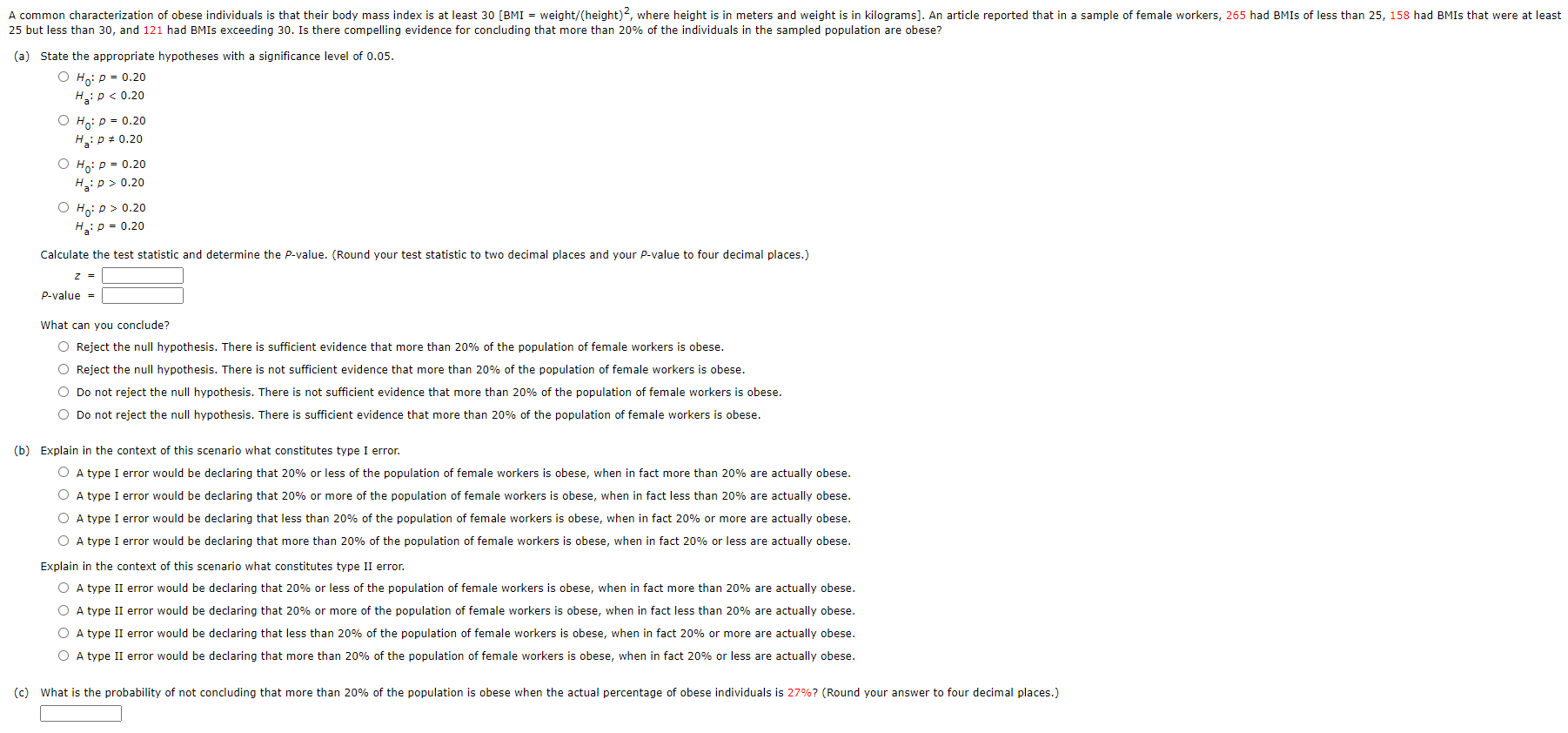Hello please help me with this problem thank you.
A common characterization of obese individuals is that their body mass index is at least 30 [BMI = weight/(height) ", where height is in meters and weight is in kilograms]. An article reported that in a sample of female workers, 265 had BMIs of less than 25, 158 had BMIs that were at least 25 but less than 30, and 121 had BMIs exceeding 30. Is there compelling evidence for concluding that more than 20% of the individuals in the sampled population are obese? (a) State the appropriate hypotheses with a significance level of 0.05. O Ho: P = 0.20 Ha: p 0.20 O Ho: P > 0.20 Ha: p = 0.20 Calculate the test statistic and determine the P-value. (Round your test statistic to two decimal places and your P-value to four decimal places.) Z = P-value = What can you conclude? O Reject the null hypothesis. There is sufficient evidence that more than 20% of the population of female workers is obese. O Reject the null hypothesis. There is not sufficient evidence that more than 20% of the population of female workers is obese. O Do not reject the null hypothesis. There is not sufficient evidence that more than 20% of the population of female workers is obese. O Do not reject the null hypothesis. There is sufficient evidence that more than 20% of the population of female workers is obese. (b) Explain in the context of this scenario what constitutes type I error. A type I error would be declaring that 20% or less of the population of female workers is obese, when in fact more than 20% are actually obese. O A type I error would be declaring that 20% or more of the population of female workers is obese, when in fact less than 20% are actually obese. O A type I error would be declaring that less than 20% of the population of female workers is obese, when in fact 20% or more are actually obese. O A type I error would be declaring that more than 20% of the population of female workers is obese, when in fact 20% or less are actually obese. Explain in the context of this scenario what constitutes type II error. O A type II error would be declaring that 20% or less of the population of female workers is obese, when in fact more than 20% are actually obese. O A type II error would be declaring that 20% or more of the population of female workers is obese, when in fact less than 20% are actually obese. A type II error would be declaring that less than 20% of the population of female workers is obese, when in fact 20% or more are actually obese. A type II error would be declaring that more than 20% of the population of female workers is obese, when in fact 20% or less are actually obese. (c) What is the probability of not concluding that more than 20% of the population is obese when the actual percentage of obese individuals is 27%? (Round your answer to four decimal places.)







